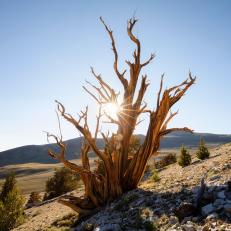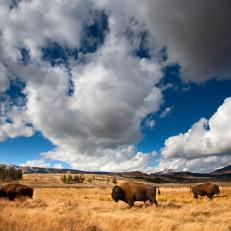Yellowstone Supervolcano Has Over 1,000 Earthquakes in 1 Month
Yellowstone's "supervolcano" had 1,008 earthquakes during July — the most tremors it's had since 2017. Is the National Park overdue for an eruption?
Related To:
lessRelated To:
Yellowstone National Park sits atop an active supervolcano.
The park's bubbling geysers and hot springs are signs of the churning activity below the earth's surface. The last time the volcano erupted was more than 70,000 years ago.
What is a supervolcano?
A supervolcano is any volcano with an eruption of magnitude 8 or higher on the Volcano Explosivity index, meaning an eruption of more than 250 cubic miles of magma. Yellowstone has had three eruptions that large — 2.1 million years ago, 1.2 million years ago, and 640,000 years ago.
"It was a doozy of a month for earthquakes in Yellowstone during July,"
said Michael Poland, the scientist in charge of the United States Geological Survey (USGS) Yellowstone Volcano Observatory. Seismograph stations detected 1,008 earthquakes this July, but Poland said there might've been even more, including some small earthquakes that could've been missed by the computers.
In June 2017, scientists recorded 1,100 earthquakes in Yellowstone.
While 1,008 earthquakes may seem like a lot (and it is above average), this is not the first time Yellowstone has experienced a swarm of quakes. In 1985, there was a swarm of over 3,000 tremors in Madison Plateau.
The supervolcano isn't erupting any time soon.
In a tweet, the USGS said "There have been lots of quakes in the past two months, but this is how Yellowstone behaves, with cycles of more and less seismicity. It's not a sign of magma movement. An eruption is not imminent."
The Yellowstone area is prone to earthquakes.
There are a lot of existing faults in Yellowstone. As snow melts, the groundwater pore pressure increases, which can be a common cause for the many (and oftentimes large) earthquakes in the area.
If magma activity was the cause of the earthquakes, there would be signs.
If the supervolcano was the cause of this recent seismic activity, scientists would expect to see other indicators like gas emissions and ground deformation. None of these were detected during the July earthquake swarm.


















